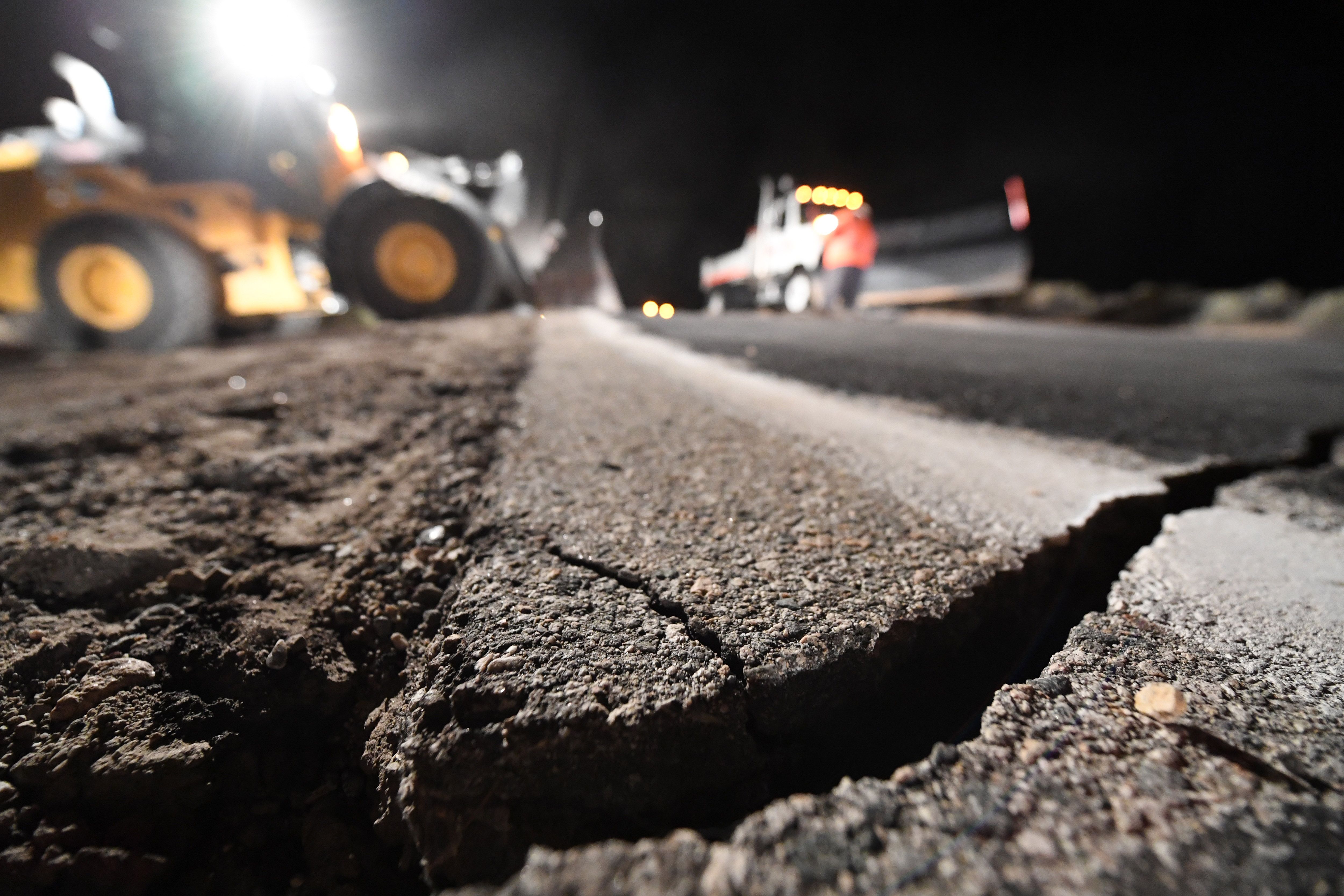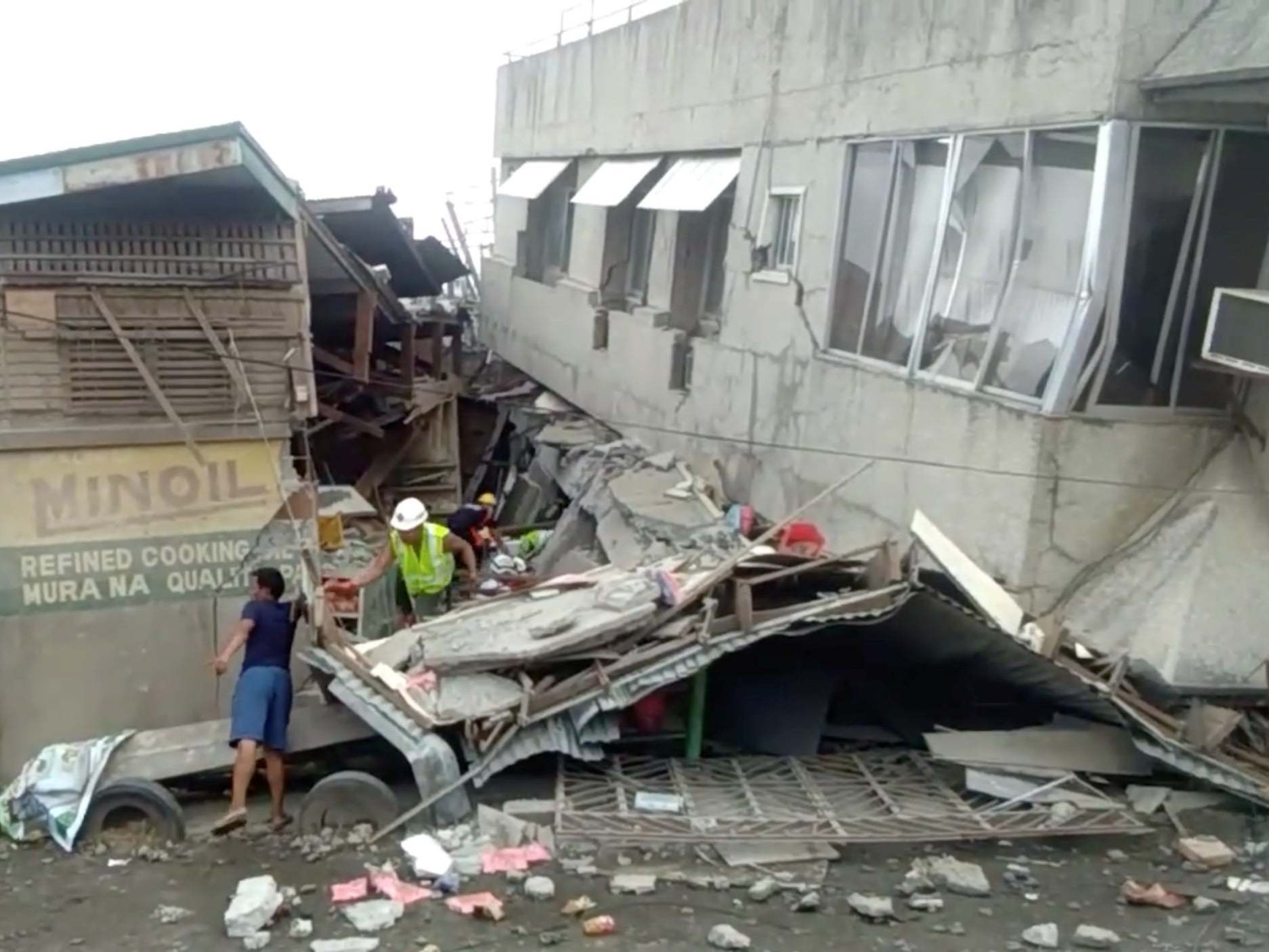

Comprising two segments the Sürgü Fault runs 70 km (43 mi) between Çelikhan and Nurhak the Çardak Fault runs 90 km (56 mi) between Nurhak and Göksun. The Sürgü-Çardak Fault is an east-west striking 160 km (99 mi) long fault that runs north of the EAF. On the northern strand, a slip rate of 2.5 mm (0.098 in) per year was estimated on the Çardak segment. The estimated slip rate on the main strand of the EAF system decreases south-westwards from 10 mm (0.39 in) per year on the Karlıova segment down to 2.9 mm (0.11 in) per year on the Amanos segment. A northern strand to the EAF has also been recognized, including the Sürgü, Çardak, Savrun, Çokak, Toprakkale, Yumurtalık, Karataş, Yakapınar and Düziçi–İskenderun segments. The Amanos segment is also considered part of the DST by some geologists, or a transitional structure between the EAF and DST by others. The 700 km-long (430 mi) EAF is subdivided into seven segments, from the northeast the Karlıova, Ilıca, Palu, Pütürge, Erkenek, Pazarcık and Amanos segments. The EAF continues west of the triple junction, forming the boundary between the African and Anatolian plates, linking into the Cyprus arc to the west via the Latakia Ridge. The DST and EAF meet at the Marash Triple Junction. The northern end of the DST truncates at the East Anatolian Fault (EAF) another major left-lateral strike-slip fault zone that accommodates the overall westward movement of the Anatolian Plate as it is extruded in that direction by the northward movement of the Arabian Plate. The boundary between the African and Arabian plates is represented by the Dead Sea Transform (DST)-a major zone of left-lateral strike-slip fault-it accommodates the relative northward movement of Arabia with respect to Africa. Map of the Anatolian Plate, showing location of the East Anatolian FaultĬentral southern Turkey and northwestern Syria are affected by the interaction between three tectonic plates the African Plate, Arabian Plate and Anatolian Plate. Following Turkey's call for international help, more than 141,000 people from 94 countries joined the rescue effort. Damages were estimated at US$104 billion in Turkey and US$14.8 billion in Syria, making them the fourth-costliest earthquakes on record.ĭamaged roads, winter storms, and disruption to communications hampered the Disaster and Emergency Management Presidency's rescue and relief effort, which included a 60,000-strong search-and-rescue force, 5,000 health workers and 30,000 volunteers. It is also the deadliest in present-day Syria since the 1822 Aleppo earthquake the deadliest worldwide since the 2010 Haiti earthquake and the fifth-deadliest of the 21st century. It is the deadliest earthquake in what is now present-day Turkey since the 526 Antioch earthquake and the deadliest natural disaster in its modern history. The confirmed death toll stood at 59,259: 50,783 in Turkey and 8,476 in Syria. Development experts from the United Nations estimated that about 1.5 million people were left homeless.

An estimated 14 million people, or 16 percent of Turkey's population, were affected. There was widespread damage in an area of about 350,000 km 2 (140,000 sq mi), about the size of Germany. The seismic sequence was the result of shallow strike-slip faulting. There were more than 10,000 aftershocks in the three weeks that followed. It was felt as far as Egypt and the Black Sea coast of Turkey. It is also one of the strongest earthquakes ever recorded in the Levant. The M w 7.8 earthquake is the largest in Turkey since the 1939 Erzincan earthquake of the same magnitude, and jointly the second-strongest recorded in the history of the country, after the 1668 North Anatolia earthquake. There was widespread damage and tens of thousands of fatalities. This earthquake was centered 95 km (59 mi) north-northeast from the first. It was followed by a M w 7.7 earthquake at 13:24. The earthquake had a maximum Mercalli intensity of XII ( Extreme) around the epicenter and in Antakya. The epicenter was 37 km (23 mi) west–northwest of Gaziantep. On 6 February 2023, at 04:17 TRT (01:17 UTC), a M w 7.8 earthquake struck southern and central Turkey and northern and western Syria. Clockwise from top: Collapsed buildings in Hatay Province, a view of the wreckage from Aleppo, Syria, Chinese Blue Sky and Iranian search and rescue teams in Adıyaman, an assistance of USAID in İncirlik Air Base and a tent city in Kahramanmaraşģ7☀9′58″N 37☀1′55″E / 37.166°N 37.032☎ / 37.166 37.032 Coordinates: 37☀9′58″N 37☀1′55″E / 37.166°N 37.032☎ / 37.166 37.032ĭead Sea Transform, East Anatolian Fault, Çardak– Sürgü Faultĥ9,259 deaths, 121,704 injured, 297 missing


 0 kommentar(er)
0 kommentar(er)
